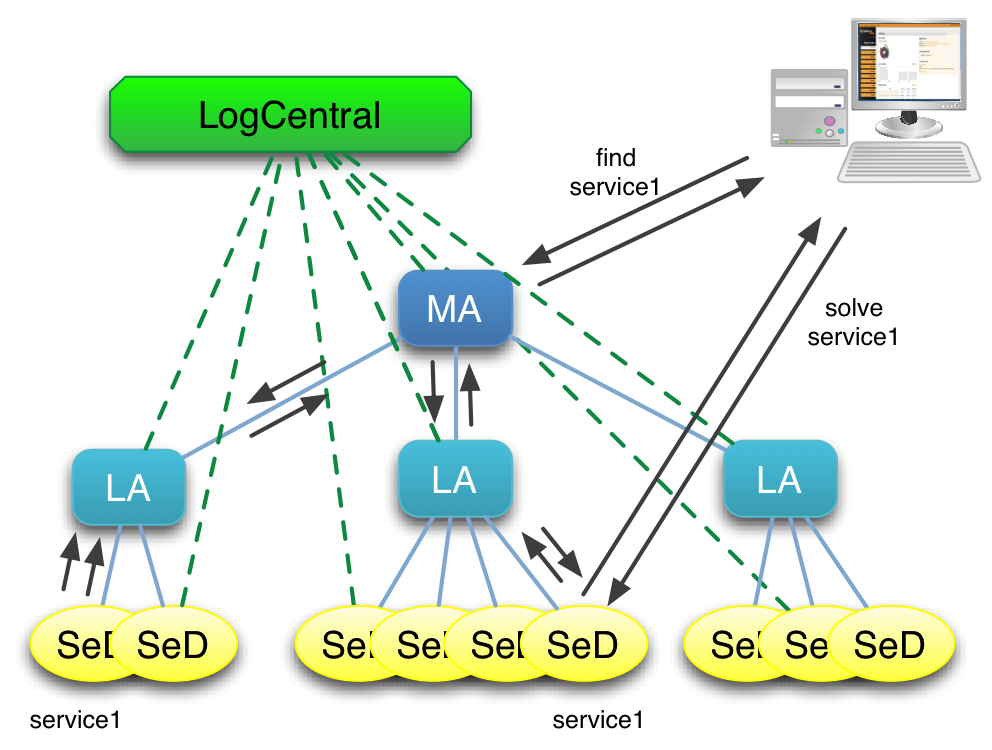
|
The DIET platform can be monitored using a system called LogService. This monitoring service offers the capability to be aware of information that you want to relay from the platform. As shown in Figure 11.1, LogService is composed of three modules: LogComponent, LogCentral and LogTool.
LogService defines and implements several functionalities:
However, incoming messages are still unsorted. Thus, the messages are buffered for a short period of time in order to deliver a sorted stream of messages to the tools. Messages that arrive out of order within this time are sorted in the buffer and can thus be properly delivered. Although this induces a delivery-delay for messages, this mechanism guarantees the proper ordering of messages within a certain tolerance. As tools should not rely on true real-time delivery of messages, this short delay is acceptable.
The problem emerges if those specific tools do not receive all messages. This might occur as tools can connect to the monitor after the application has been started. In fact, this is quite probable as the lifetime of the distributed application can be much longer than the lifetime of a tool.
As a consequence, the system state must be maintained and stored. In order to maintain a system state in a general way, LogService does not store the system state itself, but all messages which are required to construct it. Those messages are identified by their tag and stored in a special list. This list is forwarded to each tool that connects. For the tool this process is transparent, since it simply receives a number of messages that represent the state of the application.
In order to further refine this concept, the list of important messages can also be cleaned up by LogService. This is necessary as components may connect and disconnect at runtime. After a disconnection of a component the respective information is no longer relevant for the system state. Therefore, all messages which originated at this component can be removed from the list. They have become obsolete due to the disconnection of the component and can be safely deleted in order to reduce the length of the list of important messages to a minimum.
All DIET components implement the LogComponent interface. By using LogCentral, the DIET architecture is able to relay information to LogCentral, and then it is possible to connect to LogCentral by using a LogTool to collect, store and analyse this information. LogService is available for download. See the web page http://graal.ens-lyon.fr/DIET/logservice.htmlfor more information.